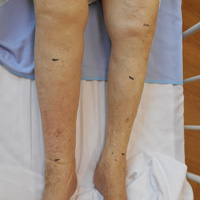Acetazolamide and SGLT2 inhibitor as potent drugs for a patient with diabetes mellitus and worsening chronic lymphedema: A case report

Submitted: 8 February 2020
Accepted: 18 April 2020
Published: 1 June 2020
Accepted: 18 April 2020
Abstract Views: 3861
PDF: 324
HTML: 698
HTML: 698
Publisher's note
All claims expressed in this article are solely those of the authors and do not necessarily represent those of their affiliated organizations, or those of the publisher, the editors and the reviewers. Any product that may be evaluated in this article or claim that may be made by its manufacturer is not guaranteed or endorsed by the publisher.
All claims expressed in this article are solely those of the authors and do not necessarily represent those of their affiliated organizations, or those of the publisher, the editors and the reviewers. Any product that may be evaluated in this article or claim that may be made by its manufacturer is not guaranteed or endorsed by the publisher.

 https://doi.org/10.4081/vl.2020.8889
https://doi.org/10.4081/vl.2020.8889





